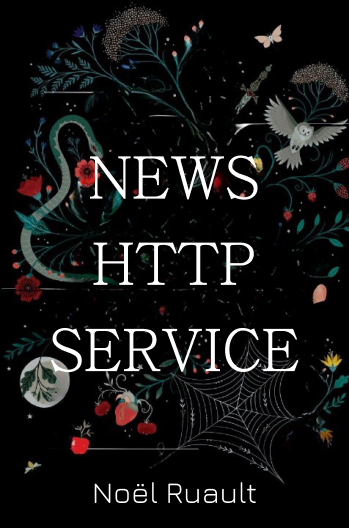Golang Coding challenge
The dev team created this coding challenge to help assess your coding and problem-solving skills. Along with this file, you should find an archive with the code of the project to complete.
The Project
The project contains a simple HTTP service that simulates a news API.
Content
- The content itself is fetched from multiple providers (those could be 3rd party APIs, internal services, or database connections).
- Content providers are represented by the
Providertype. And the API has a mapping between providers andClients, which are used to fetch content.
Content configuration
- The API has set a configuration, which represents the repeating sequence of providers to use.
If the sequence is
[Provider1, Provider2, Provider3]and the user requests five (5) articles, the response should contain items from[Provider1, Provider2, Provider3, Provider1, Provider2]in that order.
In addition,
- If a provider fails to deliver content, the configuration might contain a fallback to use instead.
- If both, the main provider and the fallback fail (or if the main provider fails and there is no fallback), the API should respond with all the items before that point. So, for example, if the configuration calls for
[1,1,2,3]and2fails, the response should only contain[1,1].
The Interface
The API responds to GET requests with 2 URL parameters:
countrepresents the number of items desiredoffsetrepresents the number of items previously requested. The configuration should be offset by this number.
The expected response is a list of content items, each one being a JSON representation of the ContentItem struct, found in content.go
Example request/response:
Request:
http '127.0.0.1:8080/?count=3&offset=10'
Response:
HTTP/1.1 200 OK
Content-Length: 385
Content-Type: application/json
Date: Thu, 24 Sep 2020 10:47:11 GMT
[
{
"expiry": "2020-09-24T11:47:11.204318471+01:00",
"id": "5577006791947779410",
"link": "",
"source": "1",
"summary": "",
"title": "title"
},
{
"expiry": "2020-09-24T11:47:11.204324536+01:00",
"id": "8674665223082153551",
"link": "",
"source": "1",
"summary": "",
"title": "title"
},
{
"expiry": "2020-09-24T11:47:11.204326896+01:00",
"id": "6129484611666145821",
"link": "",
"source": "2",
"summary": "",
"title": "title"
}
]
Instructions
- Complete the
ServeHTTPmethod inserver.goin accordance with the specifications above. - Run existing tests, and make sure they all pass.
- Add some tests to catch missing edge cases. For example, check that fallbacks are handled.
Hints:
- You can run the server simply with
go run .in the projects directory. - Tests are run with
go testin the current directory. - Try to keep to the standard library as much as possible
- Latency is crucial for this application, so fetching the items sequentially one at a time might not be good enough
Decisions taken on the implementation
- For the sake of simplicity, I coded a simple test that works with the given implementation, but there is another test that would work if external dependencies were added.
- When testing, I’ve decided to mock
rand.Intandtime.Nowpackages creating a global variable rather than (for example) extendSampleContentProviderto take anowfunc() time.Time. - I’ve created a custom error struct to return a formatted error on the response.
- I’ve used a helper function (
Respond) to return a unified response. - Added golangci.yml for the CI/CD to catch errors for me but also to be independent from the IDE. In addition, would help other people to follow same linter rules.
Querying the service
The application is tested by server_test.go file, but you can query the running service by running:
curl "http://localhost:8080/?count=8" | jq
Expected result sources: 1 1 2 3 1 1 1 2 given default config
curl "http://localhost:8080/?count=8&offset=10" | jq
Expected result sources: 2 3 1 1 1 2 1 1 given default config






